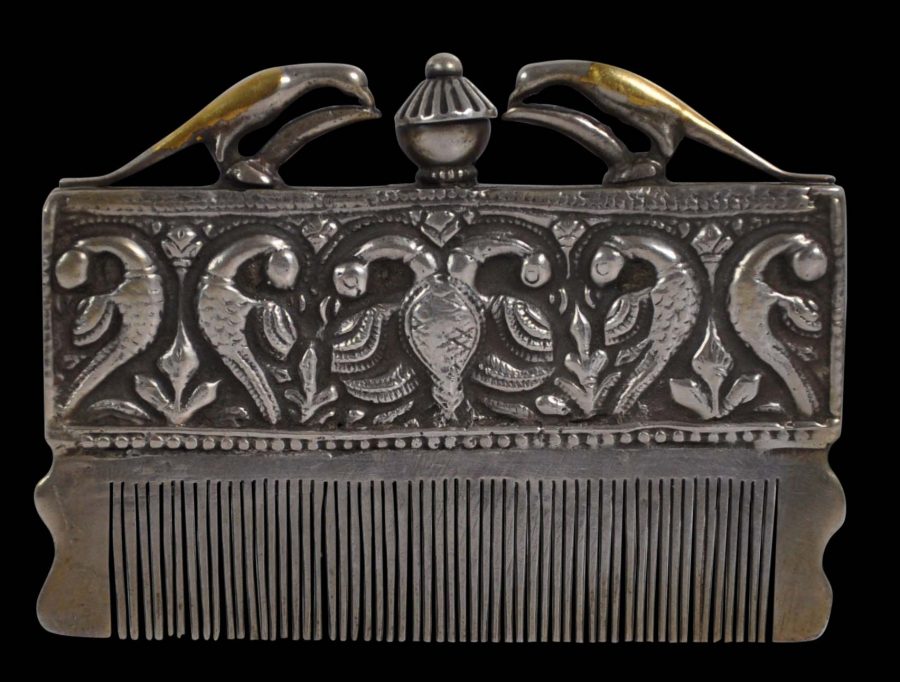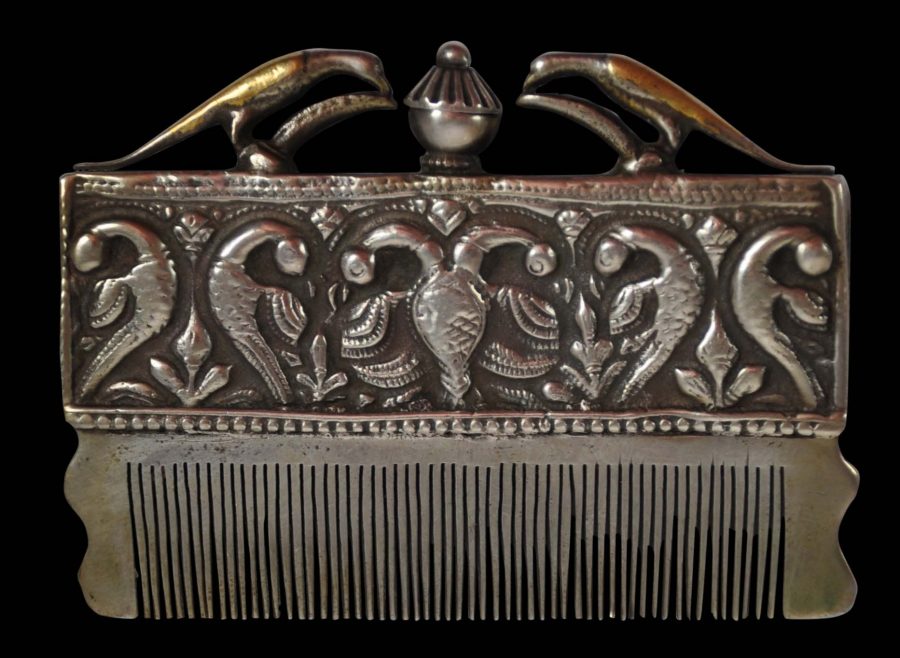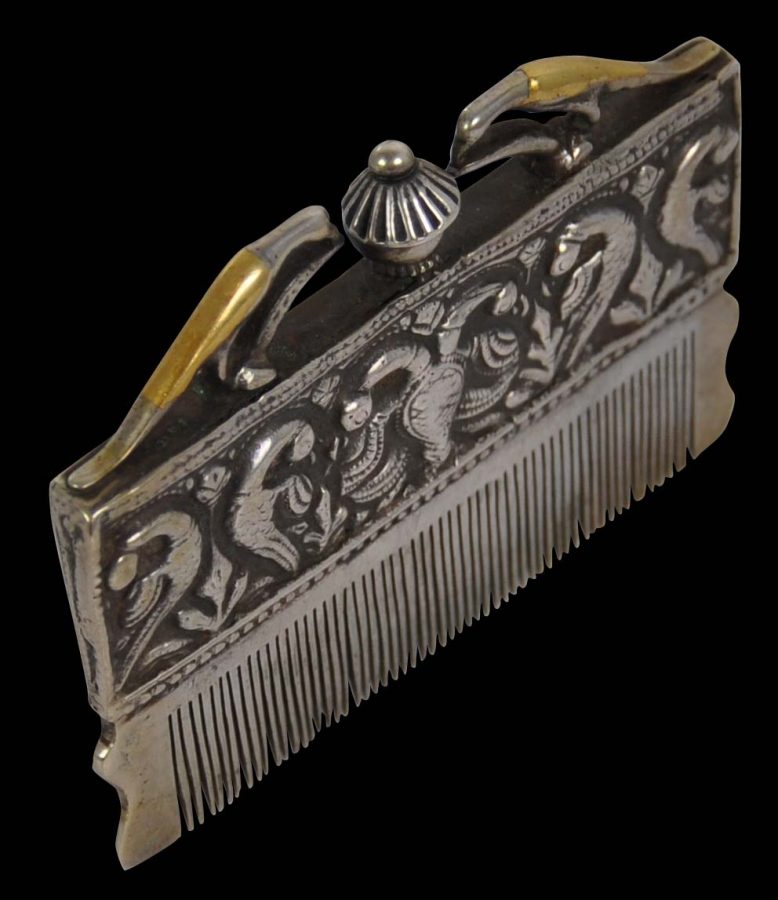This fine comb of silver and gold overlay is from Mysore in south India, and most probably was made for a member of the ruling royal family.
It would have been used to keep an elaborate coiffure in place and as such can be considered as an item of jewellery as much as being a utilitarian piece.
It has a tapering form and is surmounted by a pair of long-tailed birds which peck at the screw finial between them. This unscrews (clockwise) to allow the body of the comb to be filled with perfume which would be slowly released into the hair via tiny holes between the teeth of the comb.
Birds are chased into the body of the comb on both sides.
At the centre of the comb’s central panel on both sides is a double-headed bird (ganda bherunda) in a form that was the crest of the royal house of Mysore, the Wodiyer Dynasty, the Hindu dynasty that ruled the Kingdom of Mysore from 1399 to 1947, until the independence of India from British rule. A very similar comb is illustrated in Aitken (2004, p. 130) who says in respect of that comb that it was probably made for a member of the royal family, and so it must be with the comb here.
The comb is in fine condition, and with ample signs of age and use.
References
Aitken, M.E., When Gold Blossoms: Indian Jewelry from the Susan L. Beningson Collection, Asia Society & Philip Wilson Publishers, 2004.
Bala Krishnan, U.R., & M.S. Kumar, Dance of the Peacock: Jewellery Traditions of India, India Book House Ltd, 1999.
Bala Krishnan, U.R. et al, Icons in Gold: Jewelry of India from the Collection of the Musee Barbier-Mueller, Somogy, 2005.
Borel, F., The Splendour of Ethnic Jewelry: From the Colette and Jean-Pierre Ghysels Collection, Thames & Hudson, 1994.




